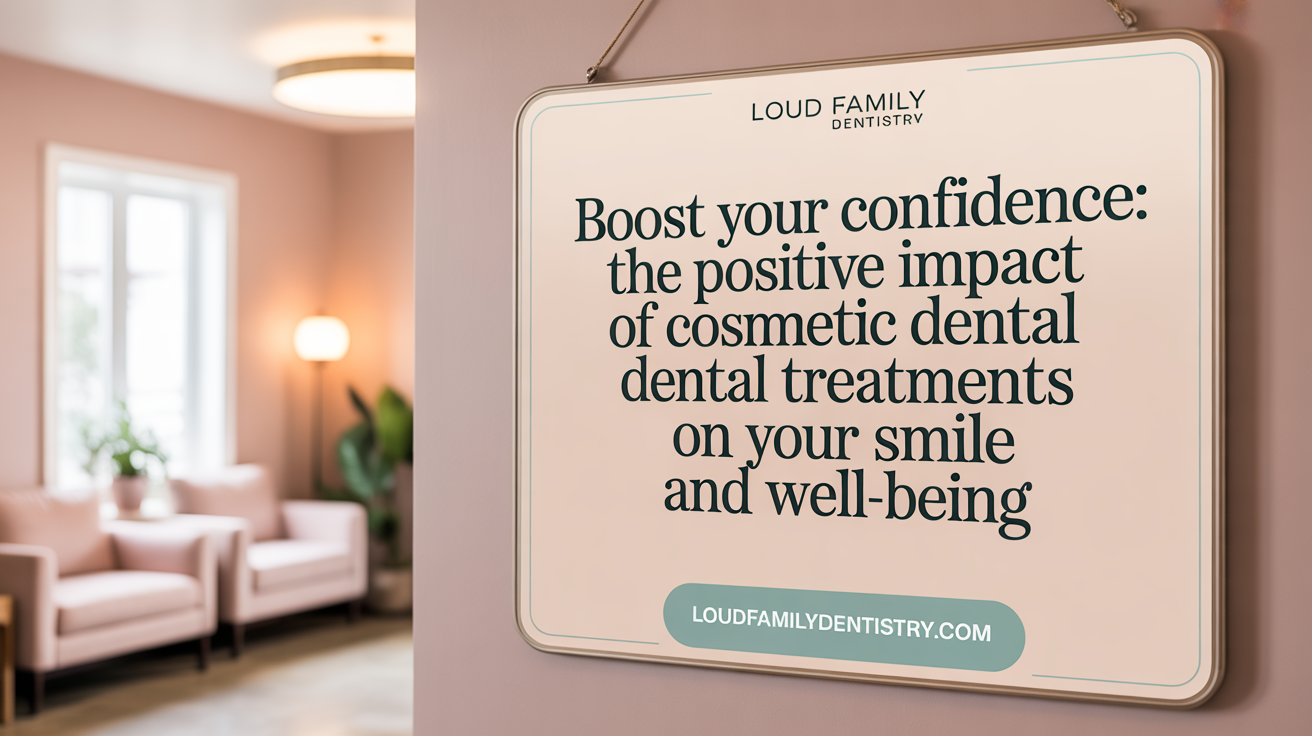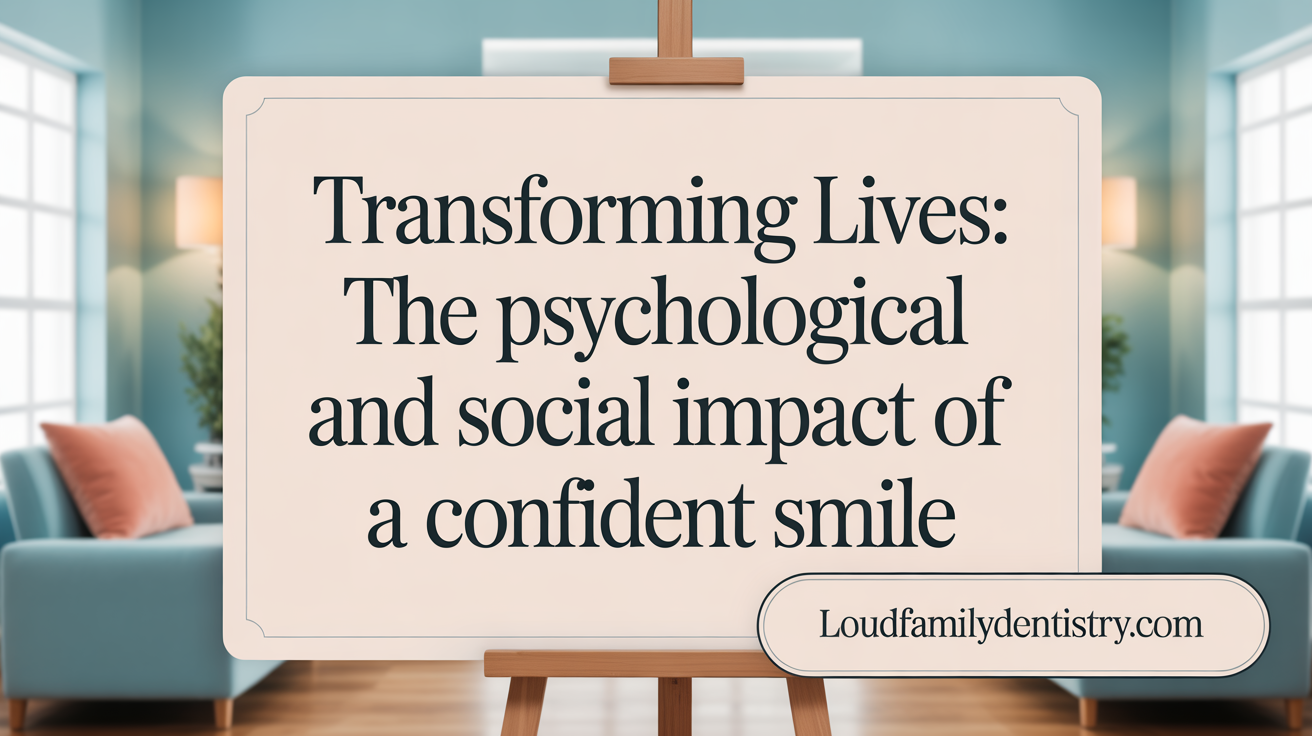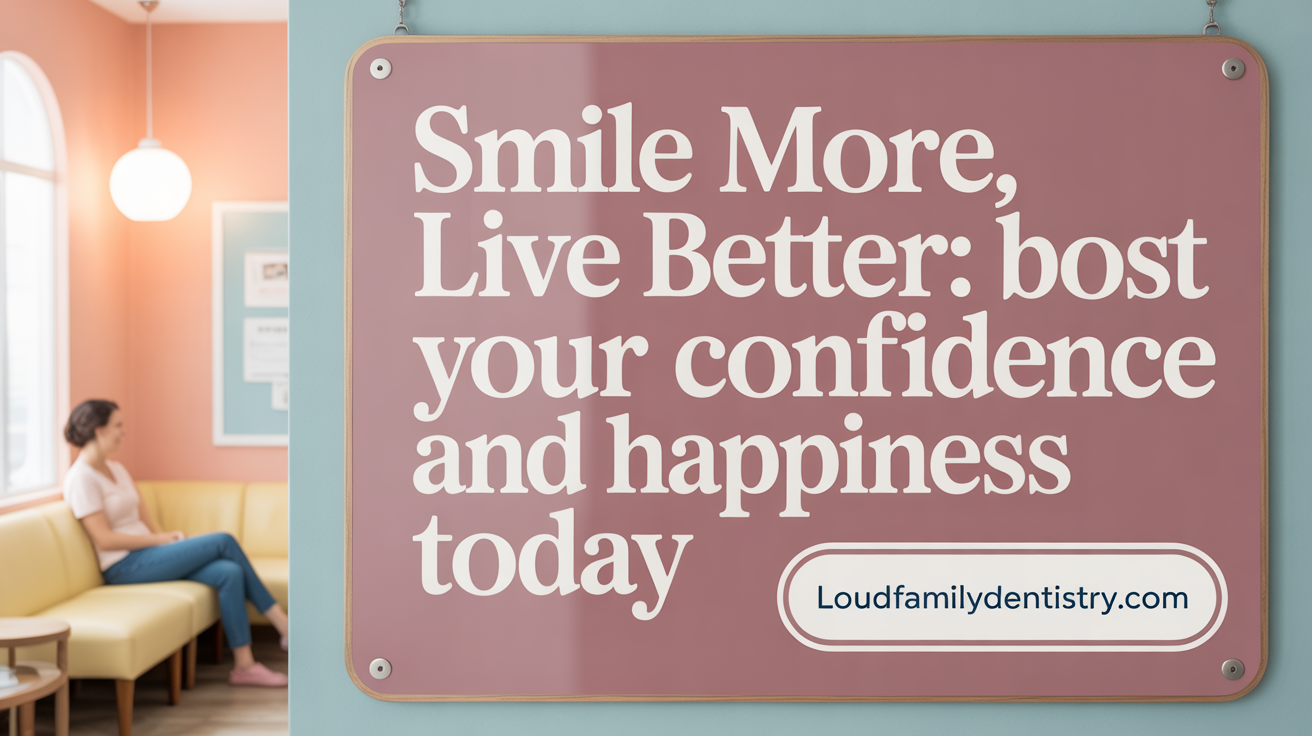Understanding the Impact of Cosmetic Dental Treatments
Cosmetic dental treatments are increasingly recognized not only for their aesthetic benefits but also for their profound impact on psychological well-being and quality of life. This article explores robust statistical evidence and scientific research findings demonstrating how improving dental aesthetics can lead to enhanced self-esteem, greater social confidence, and improved overall life satisfaction. By examining diverse studies and psychological measures, we clarify the broad benefits provided by cosmetic dentistry and their significance in mental health and social interactions.
Statistical Evidence Linking Cosmetic Dental Treatments to Confidence and Quality of Life
 Research consistently demonstrates a strong statistical link between cosmetic dental procedures and improvements in self-esteem and overall quality of life. For example, studies using measures like the Rosenberg Self-Esteem Scale reveal notable increases in confidence levels post-treatment. In one such study, scores improved significantly from an average of 18.2 before treatment to 24.6 afterward, with a p-value less than 0.001, indicating high statistical significance.
Research consistently demonstrates a strong statistical link between cosmetic dental procedures and improvements in self-esteem and overall quality of life. For example, studies using measures like the Rosenberg Self-Esteem Scale reveal notable increases in confidence levels post-treatment. In one such study, scores improved significantly from an average of 18.2 before treatment to 24.6 afterward, with a p-value less than 0.001, indicating high statistical significance.
Similarly, patient-reported outcomes related to oral health and psychosocial impacts show marked reduction in negative effects. The Oral Health Impact Profile (OHIP-14), which gauges the social and psychological burden of dental appearance concerns, decreased from an average of 30.7 pre-treatment to 18.1 at follow-up, again with a p-value less than 0.001.
Beyond the numeric data, behavioral signs of increased confidence are evident. Patients report feeling more comfortable smiling, more willing to participate in social activities, and showing a greater openness in social interactions.
The close association between aesthetic satisfaction and psychological well-being emphasizes how cosmetic dental treatments substantively boost confidence. The connection is supported by high percentages of patients acknowledging increased self-confidence—85% after teeth whitening and 90% following veneers—and improvements in social and professional engagements.
In summary, statistically significant data confirm that cosmetic dental procedures are effective not just visually but also psychologically, fostering enhanced self-esteem and a better quality of life.
| Study Focus | Key Findings | Significance |
|---|---|---|
| Self-esteem improvement | Increase from 18.2 to 24.6 in Rosenberg scores (p < 0.001) | Shows rapid psychological boost post-treatment |
| Quality of life (OHIP) | Decrease from 30.7 to 18.1 (p < 0.001) | Indicates reduced social and psychological burdens |
| Behavioral indicators | Increased smiling, social participation, confidence | Reflects real-world changes in confidence levels |
| Patient satisfaction | 85% report higher self-confidence; 90% improved social confidence | Demonstrates broad impact on daily life and interactions |
Overall, these robust, statistically supported findings underscore the positive influence of cosmetic dental interventions on individual confidence and life quality.
Psychological and Social Impacts of Dental Aesthetics: Research Findings

What scientific findings exist regarding the psychological and social impacts of dental aesthetics?
Research consistently shows that dental appearance plays a pivotal role in shaping individuals’ mental health and social experiences. Studies demonstrate that dissatisfaction with teeth—such as issues with alignment, color, or shape—can lead to decreased self-esteem and increased psychological discomfort. For instance, patients who undergo cosmetic dental treatments often report immediate improvements in self-confidence and body image.
Using validated tools like the Psychosocial Impact of Dental Aesthetics Questionnaire (PIDAQ), researchers have found strong negative correlations between poor dental aesthetics and self-esteem. When dental appearance is perceived negatively, individuals tend to experience social withdrawal, lower self-confidence, and emotional distress.
Demographic factors also influence these perceptions. Females and adolescents, especially in certain cultural contexts, often express higher aesthetic concerns. For example, female patients are more likely to report dissatisfaction with tooth color and shape, correlating with lower self-esteem scores. Additionally, higher parental education levels—particularly fathers’ university degrees—have been linked to increased aesthetic concern among adolescents.
Clinical features such as protruding teeth or uneven gum lines contribute significantly to psychosocial impact. Participants feeling that their teeth protrude or are misaligned report higher dissatisfaction and lower confidence. Conversely, restorative procedures like veneers, bonding, and whitening not only enhance smile aesthetics but also bring about measurable improvements in psychological well-being.
Overall, a growing body of evidence underscores that improving dental aesthetics can effectively boost self-esteem, reduce social anxiety, and promote better mental health. Incorporating aesthetic solutions into dental care can thus serve as a vital step toward enhancing patients’ overall quality of life, especially for those affected by aesthetic concerns.
Enhancing Self-Esteem and Social Confidence Through Cosmetic Dental Procedures

How do cosmetic dental procedures influence self-esteem and social confidence?
Cosmetic dental procedures play a significant role in boosting individuals' self-esteem by improving the outward appearance of their teeth. Procedures such as teeth whitening, veneers, bonding, and orthodontics help create a more attractive smile, making people feel more confident about their looks.
This increase in self-confidence often makes individuals more comfortable in social settings. They tend to smile more and engage more openly with others, which can lead to better personal and professional relationships.
Studies show that after cosmetic treatments, many patients report a substantial rise in self-esteem and a more positive self-image. For instance, about 85% of patients notice increased confidence following teeth whitening, and 90% feel more secure in social interactions after receiving veneers.
Furthermore, improvements in dental aesthetics can influence mental well-being, reducing feelings of self-consciousness and social anxiety. When people feel good about their smile, they are more likely to participate in social activities, which further enhances their overall happiness.
In summary, cosmetic dental procedures not only improve appearance but also promote a more confident and socially active lifestyle. The lasting benefits include better emotional health and greater opportunities in personal and professional domains.
Mental Health Benefits Linked to Cosmetic Dental Treatments
What are the mental health and well-being benefits associated with cosmetic dental treatments?
Cosmetic dental procedures offer more than just aesthetic improvements; they also bring significant psychological advantages. Patients who undergo treatments like veneers, teeth whitening, and gum contouring often experience a boost in self-esteem and confidence, which can greatly enhance their mental health.
When dental imperfections such as stains, chips, or crooked teeth are corrected, individuals typically feel less self-conscious and more comfortable in social situations. This reduction in self-focused anxiety leads to decreased feelings of depression and social withdrawal. As people become more confident in their smile, they are more likely to engage in social interactions, build trust, and foster stronger personal and professional relationships.
Moreover, the psychological benefits of cosmetic dentistry contribute to greater emotional resilience. Patients report increased happiness and motivation, encouraging them to participate actively in social and work life.
The overall impact of these treatments underscores how enhancing just one aspect of physical appearance can lead to broader improvements in mental health. Not only do these procedures improve external visual appeal, but they also promote a balanced, positive mental outlook, fostering a healthier and more resilient emotional state.
Dental Aesthetics' Role in Psychological Well-Being and Life Satisfaction
How do dental aesthetics impact psychological well-being and overall life satisfaction?
Dental appearance plays a crucial role in shaping an individual’s sense of self and social confidence. Research shows that satisfaction with the aesthetics of teeth—such as color, shape, and alignment—can significantly boost self-esteem and reduce feelings of social anxiety.
Individuals who perceive their dental appearance positively tend to engage more confidently in social situations, fostering better personal and professional relationships. Conversely, dissatisfaction with dental features, including concerns about tooth color, shape, or protrusion, is linked to lower self-esteem and heightened self-consciousness.
Studies involving cosmetic dental treatments demonstrate that improvements in dental aesthetics often lead to meaningful psychological benefits. Patients commonly report increased self-confidence and a more positive self-image after procedures like veneers, whitening, or bonding. These aesthetic enhancements contribute to an overall sense of well-being and greater life satisfaction.
In summary, enhancing dental aesthetics not only elevates one's appearance but also promotes emotional health. It fosters personal confidence, reduces social fears, and can lead to a more fulfilling and socially active life, highlighting the significant connection between a beautiful smile and psychological well-being.
Long-Term Quality of Life Improvements Following Restorative Dental Treatments
Sustained improvements in oral health-related quality of life
Restorative dental treatments, such as composite resin restorations for moderate to severe tooth wear, have been shown to significantly enhance patients’ oral health-related quality of life (OHRQoL). Patients report reduced discomfort and improved function after treatment, which contribute to greater overall well-being. These improvements are not just immediate; studies indicate they are maintained over time, with patients experiencing continued benefits years after the initial procedure.
Stability of aesthetic perception enhancements over years
Beyond functional improvements, aesthetic perceptions also remain positively influenced long-term. Patients who undergo procedures like veneers and full-mouth restorations notice sustained improvements in their self-image and facial appearance. For example, the perceived aesthetics of their teeth and smile remain more favorable up to five years post-treatment, supporting their confidence and social interactions. Such stability highlights the lasting impact of aesthetic dental work on personal self-esteem.
Patient-reported outcome measures demonstrating lasting benefits
Patient-reported outcome measures (PROMs), including the Oral Health Impact Profile (OHIP) and the Orofacial Esthetic Scale (OES), provide valuable insights into long-lasting benefits. Studies using these tools show a decrease in oral health-related issues, with mean scores indicating ongoing improvements in quality of life and aesthetic perception. For instance, OHIP scores dropped from around 1.8 pre-treatment to 1.3 at five years, reflecting sustained reduction in discomfort and social concerns. Similarly, the OES scores increased significantly over this period, emphasizing that patients continue to perceive a more attractive and functional smile long after their initial procedures.
Gender and Socio-Demographic Factors Affecting Dental Aesthetic Perception
Differences in dental appearance satisfaction between males and females
Research indicates that females tend to be more concerned about their dental aesthetics than males. Studies have shown that women express higher aesthetic concerns and psychosocial impacts related to their teeth and smile. For instance, in adolescent populations, females are nearly twice as likely to report dissatisfaction with their dental appearance and are more concerned about issues such as teeth color, alignment, and shape.
This heightened awareness among women may be linked to social expectations and aesthetic standards prevalent in many cultures. As a result, women often pursue cosmetic dental treatments more actively, seeking veneers, teeth whitening, and other procedures to enhance their smile.
Impact of parental education on aesthetic concerns
Parental education, especially that of fathers, has been associated with variations in adolescents' perceptions of their dental aesthetics. Data suggests that adolescents whose fathers have a university education tend to report higher psychosocial impacts and aesthetic concerns. Conversely, adolescents with mothers holding university qualifications often report less satisfaction with their dental appearance.
These patterns imply that family backgrounds and educational levels influence how young individuals perceive their dental aesthetics and self-confidence. Higher parental education might correlate with increased awareness of aesthetic ideals, influencing adolescents’ attitudes and aesthetic concerns.
Patterns of psychosocial impact across demographics
The psychosocial impact of dental aesthetics varies across different socio-demographic groups. Females consistently report higher aesthetic concerns, which is reflected in greater psychosocial impacts, such as self-esteem issues and social confidence levels.
Furthermore, cultural and educational backgrounds can shape perceptions of dental attractiveness, affecting how individuals value cosmetic treatments. Understanding these differences helps tailor dental services to meet diverse patient needs, fostering improved satisfaction and psychological well-being.
| Demographic Group | Trend in Dental Aesthetic Satisfaction | Notable Factors | Source of Impact |
|---|---|---|---|
| Females | Higher concern, lower satisfaction | Social expectations, cultural standards | Greater aesthetic concern, self-esteem impact |
| Males | Lower concern, higher satisfaction | Less social pressure | Cultural and social influences |
| Adolescents with educated fathers | Higher aesthetic concern | Family background | Increased awareness and high standards |
| Adolescents with educated mothers | Lower aesthetic concern | Family guidance | Cultural perceptions |
These patterns emphasize that gender and socio-demographic factors influence perceptions of dental aesthetics, affecting both individual satisfaction and psychosocial well-being.
Popular Cosmetic Dental Treatments and Their Role in Confidence Enhancement
Overview of Procedures: Veneers, Bonding, Whitening, Gum Contouring
Cosmetic dental treatments primarily aim to improve the external appearance of teeth and gums. Among the most popular options are veneers, bonding, teeth whitening, and gum contouring.
Veneers, especially zirconia and porcelain types, are thin shells placed over the teeth, significantly enhancing the smile's aesthetic. These can last between 10 to 30 years, making them a durable choice for long-term improvements.
Dental bonding involves applying a tooth-colored resin to repair cracks, gaps, or reshape teeth. It offers a quick, cost-effective cosmetic fix and can usually be completed in a single visit.
Teeth whitening is one of the most common procedures to remove stains caused by coffee, wine, smoking, and other substances. Treatments can be performed in-office or at home, offering flexible options for patients.
Gum contouring adjusts uneven or excessive gum tissue, creating a more balanced and attractive gum line. This procedure can also address gum disease, promoting healthier gums alongside aesthetic benefits.
Longevity and Costs of Treatments
The lifespan of cosmetic procedures varies. Veneers, depending on material and care, can last from 10 to 30 years, while bonding typically lasts 3 to 10 years. Teeth whitening results can last from several months up to 3 years, particularly with proper maintenance.
Cost also varies widely. Veneers tend to be more expensive, often ranging from several hundred to over a thousand dollars per tooth. Bonding is more affordable, usually costing a few hundred dollars per tooth. Smile makeovers combining multiple treatments can cost between $3,500 and $15,000.
Many treatments are not covered by insurance, but financing options are frequently available to help patients afford their desired procedures.
Connection Between Treatment Types and Psychological Benefits
Cosmetic dental treatments can have profound psychological impacts. Improving the appearance of teeth and gums often boosts self-esteem and self-confidence, leading to better social interactions.
Studies show that patients who undergo aesthetic procedures report feeling more secure in social and professional settings. For example, the majority of patients experience increased confidence after teeth whitening and veneers.
Treatments like veneers and full-mouth restorations also contribute to a better overall self-image, which can reduce anxiety related to dental appearance. This positive change in self-perception encourages good oral hygiene practices, creating a beneficial cycle of health and confidence.
In summary, these procedures not only enhance aesthetics but can substantially improve mental well-being, transforming smiles and self-esteem over the long term.
Enhancements in Social Interactions and Self-Perception Following Cosmetic Dentistry
What research demonstrates improvements in social interactions and self-perception following cosmetic dental treatments?
Studies and surveys have shown that cosmetic dental procedures, such as teeth whitening, veneers, and smile makeovers, can lead to notable psychological benefits. Patients often report increased self-confidence, which translates into more positive social interactions.
Research indicates that when individuals improve the appearance of their teeth, they feel more attractive and comfortable in social settings. This boost in self-esteem encourages them to engage more openly, smile more frequently, and participate actively in social activities.
Furthermore, some psychological intervention studies, specifically targeting social anxiety, reveal that treatments like Social Effectiveness Therapy (SET) and exposure therapy significantly enhance social skills and reduce distress. While these interventions are not directly related to cosmetic procedures, the improvements in self-perception they promote are relevant.
For example, one study tracked patients undergoing aesthetic dental work and found improvements in self-reported social behavior and confidence. These changes contributed to better interpersonal relationships and increased social participation.
However, direct evidence linking cosmetic dental work specifically to reduction in social anxiety or dramatic improvements in social interactions remains limited. Most existing research highlights the general psychological benefits of enhanced appearance, which suggest that aesthetic improvements can foster greater social confidence.
In summary, current data supports that cosmetic dental treatments can positively influence how individuals perceive themselves and how they function socially, although more focused research is needed to clarify the extent of these effects.
Summary: The Broad Spectrum of Benefits from Cosmetic Dentistry
The scientific and statistical evidence clearly shows that cosmetic dental treatments extend far beyond aesthetic improvements. Enhanced dental appearance significantly boosts self-esteem, social confidence, and quality of life, impacting mental health and psychological well-being positively. Gender and socio-demographic factors additionally shape perceptions of dental aesthetics and associated psychosocial effects. Popular procedures like veneers, whitening, and bonding not only beautify smiles but contribute to sustained improvements in oral health-related quality of life. Although gaps remain in causal research linking cosmetic dentistry to social anxiety outcomes, available data affirm the profound influence of dental aesthetics on personal and social functioning. Ultimately, investing in cosmetic dental treatments represents a meaningful pathway to enhancing confidence, emotional health, and overall life satisfaction.
References
- Relationship between the psychosocial impact of dental aesthetics ...
- Cosmetic Dentistry 101: Benefits and Treatment Options
- Psychological effects of aesthetic dental treatment - ScienceDirect.com
- Factors affecting dental self-confidence and satisfaction with dental ...
- Enhancement of smile design improve the patient's quality of life ...
- Factors influencing patient satisfaction with dental appearance and ...
- Perception of oral health related quality of life and orofacial ...
- Aesthetic And Oral Health Benefits Of Cosmetic Dentistry
- How Can Cosmetic Dentistry Boost Your Self-Confidence?
- Psychological and Social Effects of Oral Health and Dental Aesthetic ...
